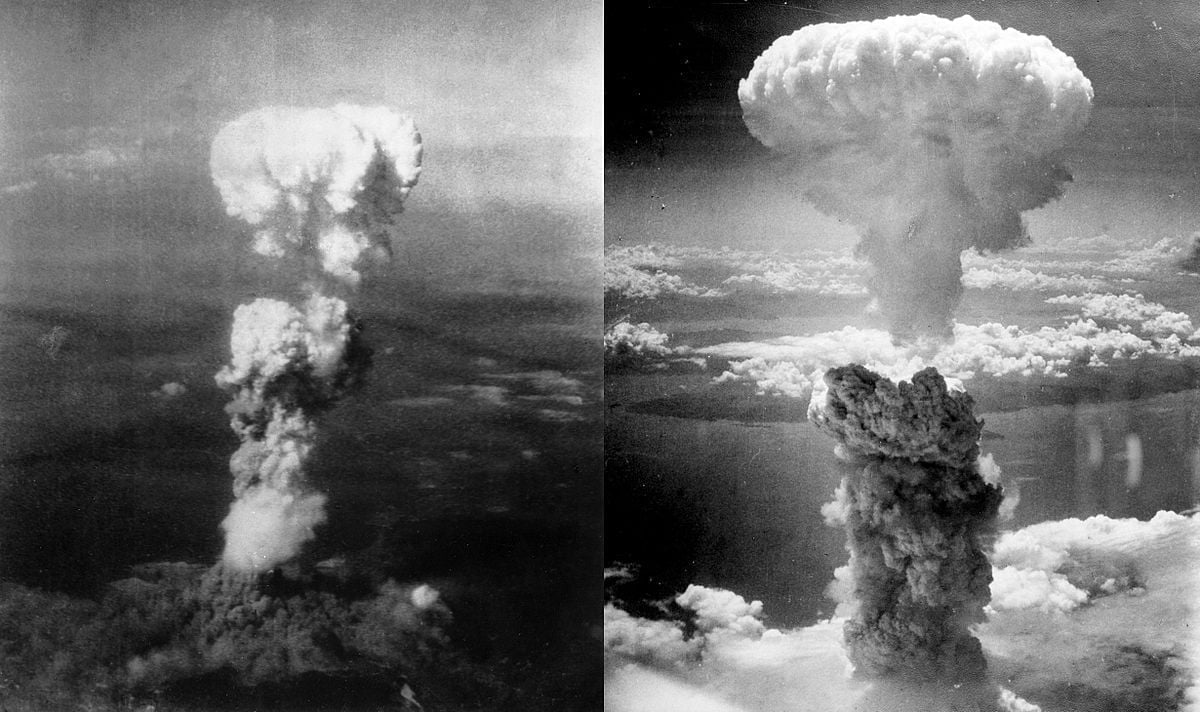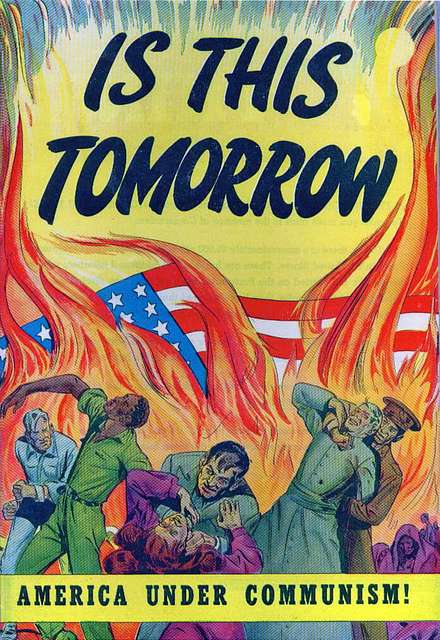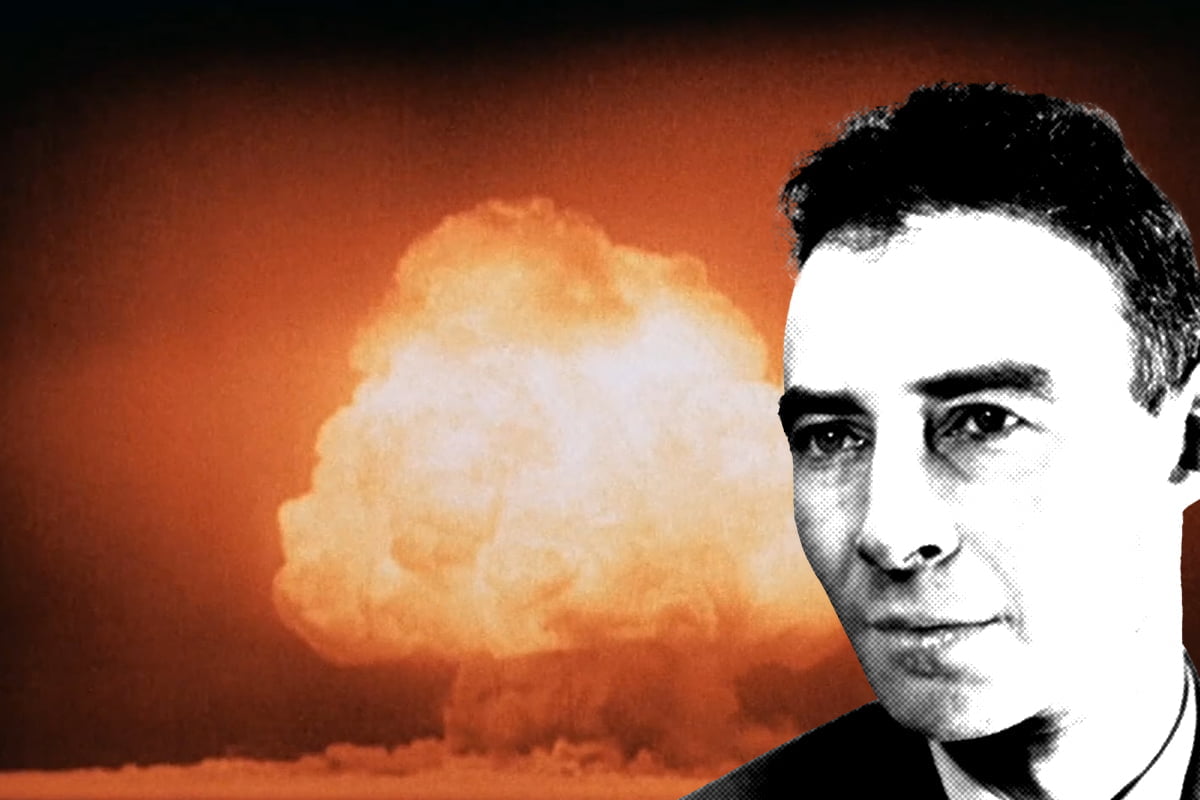Director Christopher Nolan’s latest epic, Oppenheimer, may appear an unusual subject for a summer blockbuster: a three-hour long biopic of Julius Robert Oppenheimer (played by Cillian Murphy), the American physicist who oversaw the development of the first atomic bomb.
This has certainly not dissuaded cinemagoers, however, with the film grossing over $80 million worldwide in its opening weekend.
A star-studded cast; online hype encouraging viewing as a double-feature, alongside tongue-in-cheek release Barbie; and Nolan’s well-earned reputation for making intense thrillers with impressive set-pieces: all of these ingredients, together, are a recipe for big profits.
And no doubt studio bosses will be grateful for this cash injection, given the strikes that are currently rocking Hollywood.
Battles
Based heavily on the biography American Prometheus: the Triumph and Tragedy of J. Robert Oppenheimer, Nolan’s film aims to cover the eponymous physicist’s complex life at a blistering pace, whilst maintaining excruciating dramatic tension throughout.
Murphy’s performance is particularly captivating – especially as Oppenheimer comes to face not only personal and professional adversity, but also battles with his own conscience, as he realises the reality of the potential destruction that he has helped to unleash.
Nolan’s features often see spectacle triumph over substance. But Oppenheimer generally manages to avoid this. In fact, what is most surprising (besides former Nickelodeon child actor Josh Peck’s cameo) is just how political the film is.
CPUSA
The storyline hinges around the investigation into Oppenheimer’s past associations with members of the Communist Party USA (CPUSA), and the revocation of his security clearance in 1954 – which effectively ended his career – during the peak of the McCarthyite witch-hunt that pervaded America.
The film uses this investigation as a means to explore how the physicist’s own moral values shifted before and after he became the ‘father’ of the A-bomb. But in doing so, it also provides an insight into the shifting aims of US imperialism, as it became the world’s predominant superpower.
Given the well-known anti-communist hysteria of the post-war period, it may seem crazy to the modern viewer that Oppenheimer – a man whose brother, wife, lover, and numerous friends and colleagues were all CPUSA members – was ever allowed to head up the top-secret Manhattan Project.
The CPUSA grew rapidly throughout the 1930s and 40s, especially following the Great Depression and the ensuing industrial tumult. Consequently, it came to hold important positions within the US labour movement – though unfortunately often playing a lamentable role.
At the same time, the party also gained a considerable reach amongst the US intelligentsia, such as the academics that surrounded Oppenheimer during his time at Berkeley, as the film portrays.
Oppenheimer himself, though never a card-carrying CPUSA member, was certainly a ‘fellow traveller’. He was a sympathiser of many working-class causes, such as that of Spanish republicanism, and the film also shows how he aided his university colleagues in their unionisation efforts.
The CPUSA’s Stalinist Popular Frontism, however, no doubt also had some influence on him. The physicist therefore had few qualms about accepting the US government’s invitation to join its top-secret programme to develop the bomb before the Nazis.
Put into historical context then, one can see how Oppenheimer ended up leading the Manhattan Project.
His belief that the bomb’s sole purpose, in the hands of US imperialism, would be to beat back the fascists and end the war was soon to unravel, however.
Cold War

American imperialists knew that there was a risk of potential leaks to the USSR, via communist-sympathising scientists such as Oppenheimer and his colleagues.
But they were willing to take this gamble, in order to build and demonstrate the nuclear bomb as quickly as possible – not only before the Nazis could, but also to gain an upper hand over the Soviets.
Nolan does well to show how the battle lines of the Cold War were already being drawn before World War Two had even finished.
Stalin had dissolved the Communist International in 1943, and had vociferously disavowed the cause of international socialist revolution. Nevertheless, the strategists of US imperialism feared the USSR as a potential rival world power.
The film shows how this was the real motivation behind the dropping of the bomb on Hiroshima and Nagasaki. The Japanese imperialists were ready to surrender, but the US cynically used the country to showcase its deadly new weapon – as a warning to the Soviet Union, and as a demonstration to the world that American imperialism was now top dog.
Within a matter of years, however, the Soviets also gained nuclear capability, due to leaks from the Manhattan Project. As a result, the Cold War picked up pace, especially following the Korean War.
Red Scare
The arms race was then on for developing the hydrogen bomb, a nuclear weapon of even greater power than the original atomic bomb.
Oppenheimer vocally opposed the US pursuit of the H-bomb. And the film shows his naïve hope that as the ‘father’ of the bomb, he was entitled to a say over his child.
The scientist’s vocal opposition became cause for concern for the authorities, and his loyalties began to be called into question.
At the same time, anti-communist hysteria was being whipped up everywhere, reaching its zenith with the ‘Red Scare’ of the early 1950s.

The lives and livelihoods of thousands of CPUSA members and sympathisers were ruined, as they lost their jobs and effectively became exiles in their own country. Hundreds were also jailed.
It was in this context, spurred on by petty professional rivalries, that an investigation into Oppenheimer’s life and beliefs was launched, with a subsequent kangaroo court finding the eminent professor guilty of being a ‘disloyal citizen’.
His security clearance was revoked, bringing to an end his role as advisor on the Atomic Energy Commission. This resulted in a swift fall from grace, with Oppenheimer rapidly losing any influence that he had previously held in Washington.
Horror and destruction
The biopic’s ending (SPOILER ALERT) has Oppenheimer musing as to whether his creation has potentially set in motion events leading to inevitable nuclear armageddon, with Nolan depicting his horrifying vision.
With the ongoing war in Ukraine provoking such Cold-War-era fears, this is clearly intended as a reminder to audiences of just what a modern-day nuclear exchange would entail.
The Mutually Assured Destruction that would result if the world’s imperialist powers were to deploy their atomic arsenals, however, is enough to prevent the ruling classes everywhere from ever pressing the button. After all, there would be little profit to be made if the planet was transformed into a radioactive husk.
Alongside the enormous – and growing – strength of the working class, this ‘MAD’ outcome is just one factor that rules out World War Three.
But this does not preclude wars altogether. Every year, across the world, tens of thousands die in battles over profits, markets, resources, and spheres of influence – such as the civil wars in Sudan or Ethiopia today.
In fact, as capitalism plunges further into crisis, the coming period will see an intensification of proxy wars and regional conflicts between the imperialist powers, as in Ukraine, or Syria before it.
There is only one force on Earth that can put an end to this “horror without end”, as Lenin described it: the international working class.
To do this, the working class must first become conscious of its potential power and strength, and organise to overthrow capitalism – the true ‘destroyer of worlds’.






